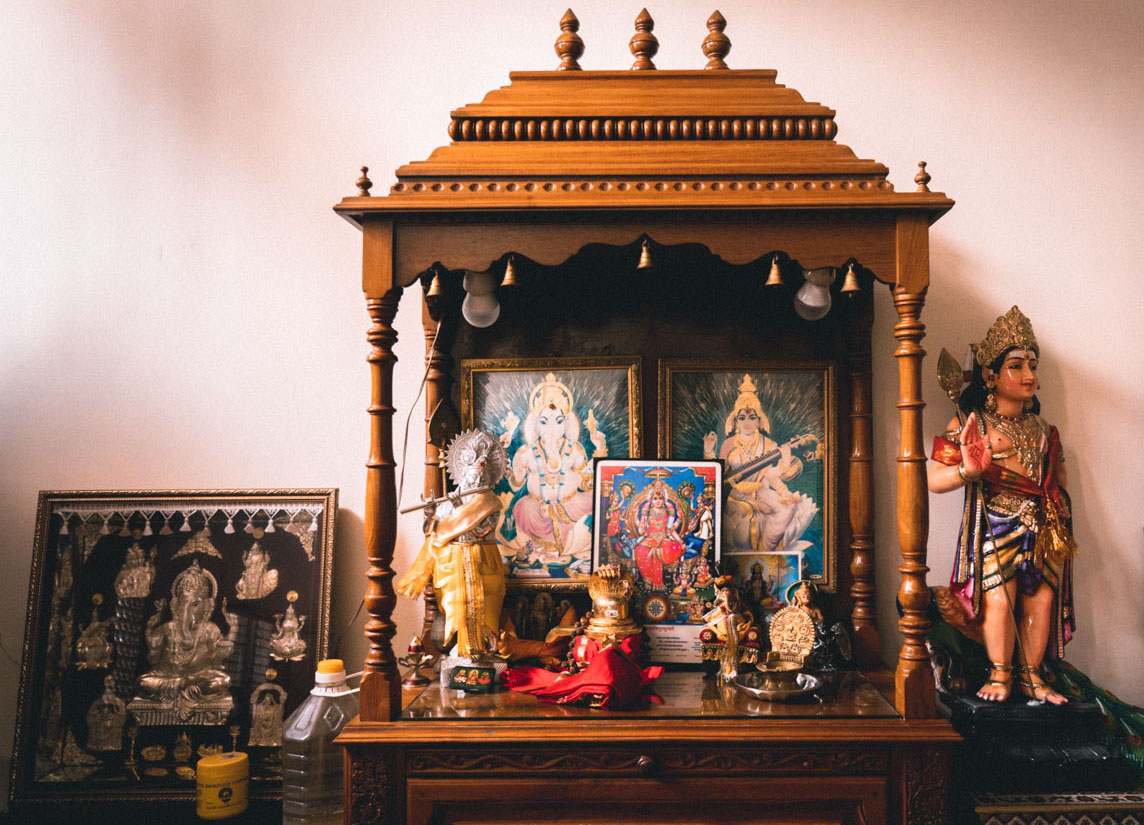All images by Zachary Tang unless otherwise stated.
This article on Hindu religious artefacts is part of a series that explores the history and use of religious artefacts across different religions in Singapore.
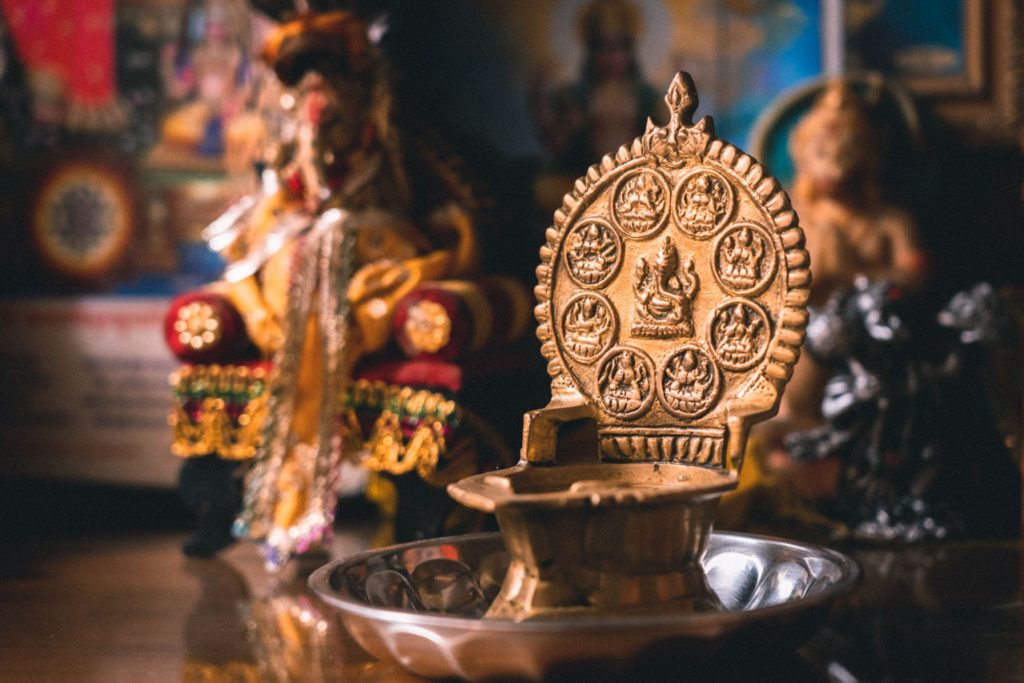
“When we perform a puja, it’s a means for man to connect to God via prayer,” S. Ravenderan, (also known as Ravi) former Vice-President of the Hindu Centre, tells me.
“But the steps for performing a puja are the same you take when you are welcoming a friend to your house. So worshipping God is akin to seeing God as a dear friend whom we are inviting to our house.”

It is apt for Ravi to begin our conversation with an account of inviting friends over, for I am currently at the Hindu Centre—a handsome shophouse located near Farrer Park MRT station—at his invitation. My purpose here today, like my prior trips to Central Sikh Temple, Gaden Shartse Dro-Phen Ling, and Thong Teck Sian Tong Lian Sin Sia, is to find out more about the use and history of religious amulets, so as to chart a fuller understanding of how Singaporeans practise their religion in their everyday life.
Ravi brings up the puja—a worship ritual performed by Hindus to offer devotional homage and prayer to one or more deities, to host and honour a guest, or to spiritually celebrate an event—to explain why some Hindus adorn themselves with religious items even though it is not compulsory in Hinduism.
The rest of this story is told from Ravi’s perspective.
Japa Mala (Chanting Beads)

“Japa” means repetitive chanting; “mala” means garland. Basically, “japa mala” is just “chanting beads”, akin to the meditation beads in Buddhism.
People sometimes wear the japa mala around the neck. During a puja, they take it out to assist in their meditation, after which they wear it again. So the purpose of the beads is practical: it provides a convenient aid for you to keep track of your chanting.
Sometimes the japa malas are given to them by a guru, who would have sanctified it in a puja.
Who are gurus? In Hindu tradition, gurus are guides, experts, and masters. As the definition suggests, there are different types of gurus. Some are teaching gurus who devote their life to spreading knowledge to people. Others are spiritual gurus. They embark on a life of penance and become spiritually evolved.
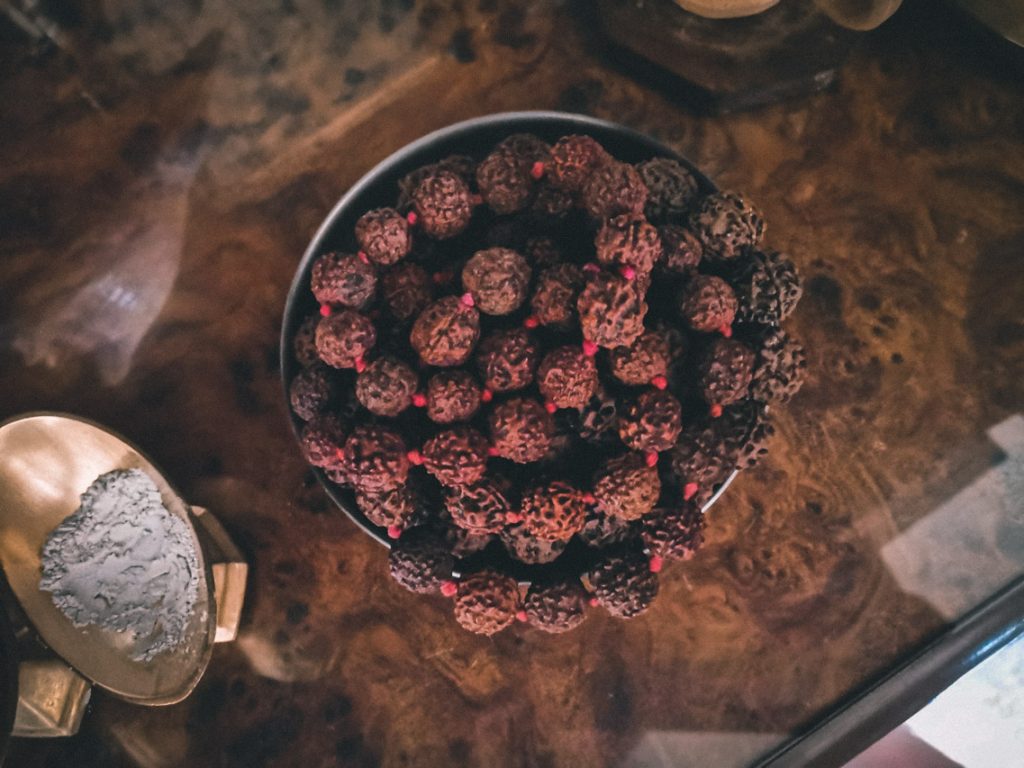
A popular type of japa mala is the rudraksha, a type of japa mala that is made from the seed of the rudraksha tree found at the foothills of the Himalayas. ‘Rudra’ is one of Lord Shiva’s Vedic names and ‘akṣha’ means teardrops. Thus defined, the name literally means ‘Lord Rudra’s (Shiva’s) teardrops’.
Typically, there are 108 beads in a japa mala. Why 108? Did you notice that if you add up the digits in 108, it gives you 9? Essentially, multiples of 9 always add up to 9. That number is very significant in Hinduism. No matter how you multiply the number 9, it continues to retain its original character. Nine is the substratum.
This mirrors how, in spite of the large amount of creation and destruction you see taking place all around, there’s a permanent entity whose existence transcends time. That is always there in the past, present, and future. And that entity is what we call God.
Navaratna (Precious Gems)
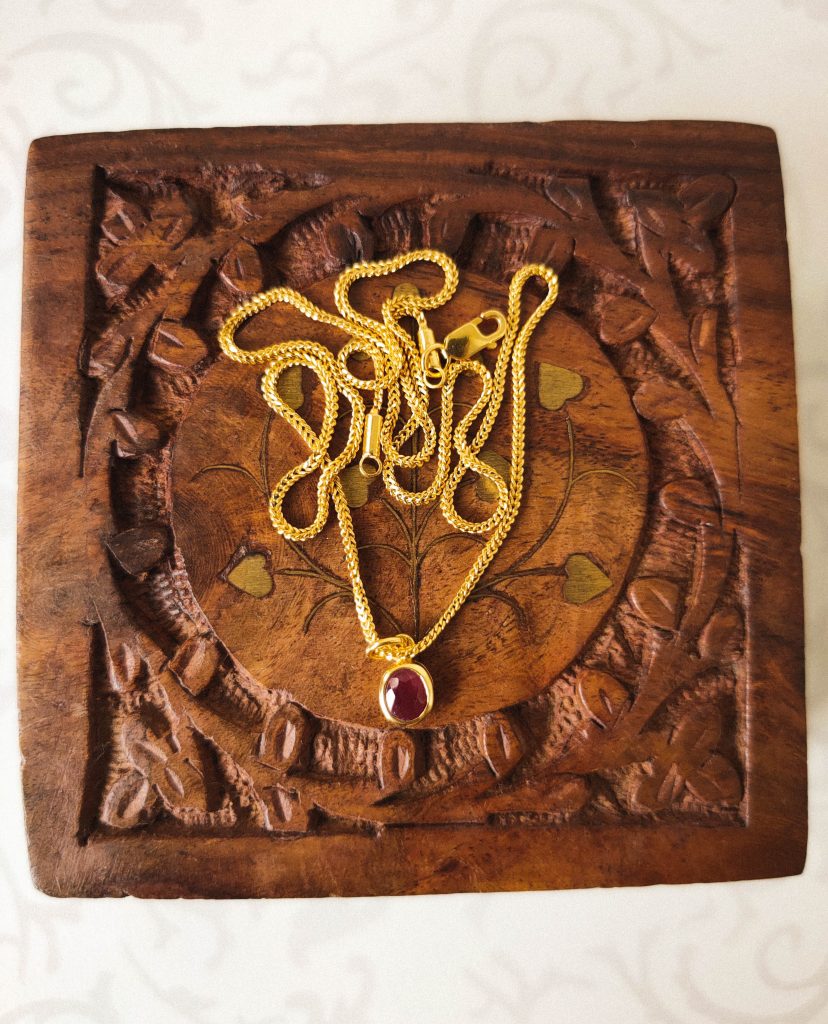
To understand the history and use of the navaratna, which means “9 gems”, we have to go back to the Vedas.
What are the Vedas? They are a body of literature that form the basis of sacred Hindu scriptures. As they were composed approximately three to four millennia ago, later readers started having difficulty understanding the Vedas.
To help them interpret the Vedas, Hindus of that time developed supporting texts known as the Vedanga. One discipline of the Vedanga, known as Jyotisha, focused on astronomy. It instructed devotees when an auspicious time for a ritual is, based on the movement of astronomical bodies.
It started with astronomy, but the Jyotisha led to astrology. People began using the position of planets and stars to read the course of someone’s life. This is what the astrologer is doing when he is reading your horoscope.
It can also be retrospective too. Sometimes the astrologer will tell you, “Oh, you had a bad time from this period to this period.” This is how we authenticate if the astrologer is good or pulling a fast one on you!

When someone is going through a bad time, it means that the positions of the 9 planets (grahas) of Hindu astrology—which are different from those in Western astrology—are unfavourable to them because of their karma in a past or present life.
In Hindu tradition, it is believed that the colour of the gem and the vibration of the gem, arising from the nature of the gem, can affect the human body. Thus, an astrologer will instruct someone who is suffering from a bad time to wear the navaratna, which can be in the form of a ring inlaid with 9 gems representing the 9 planets, to ward off the negativity.
Kaapu (Ritual Protection Thread)

“Kaapu” is a Tamil word that means “bangle”. But it also means “protection”. You know how you see Indian ladies wearing bangles? The kaapu is just like that.
The kaapu is tied on the wrists of devotees by these spiritual gurus: traditionally the right wrist for males, and left for females.
Sometimes, temple priests tie kaapu on devotees too. But it’s not as common in Singapore because being a priest is a profession and his primary job is one of handling the religious services in the temple as he has certain skillsets for that. I see the kaapu more frequently in the temples in Malaysia and India.
You keep it on all the time. Because it’s for protection, you are not supposed to take it off, even when showering or sleeping. But if it drops off—which does happen after wearing the kaapu for a long period of time—you just get a new one. It’s not a big deal. [laughter]
Bhasma (Sacred ash)
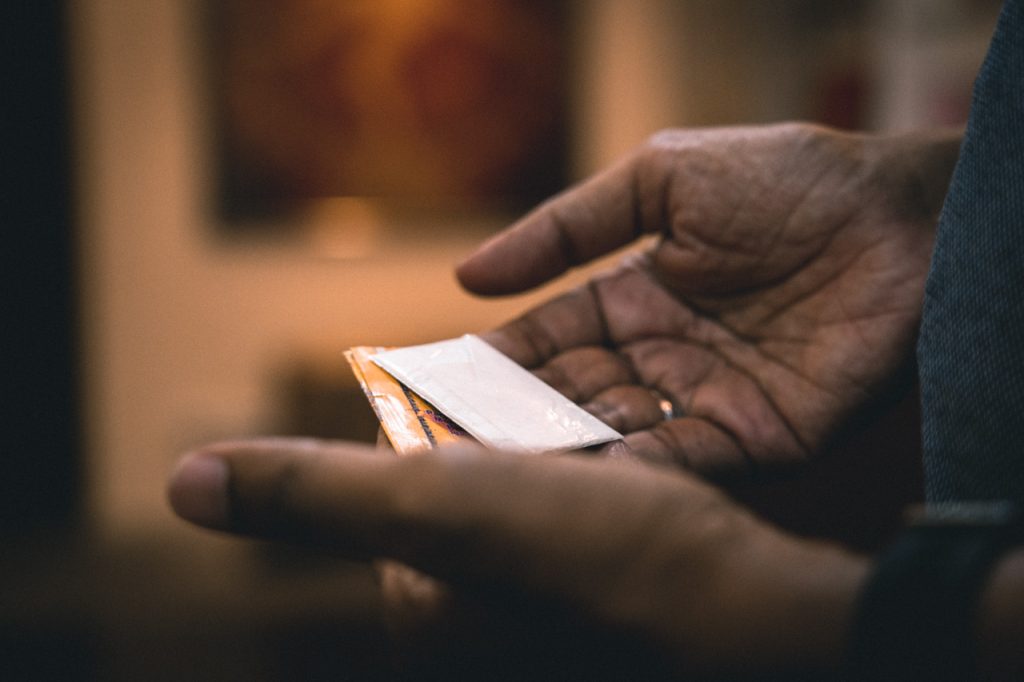
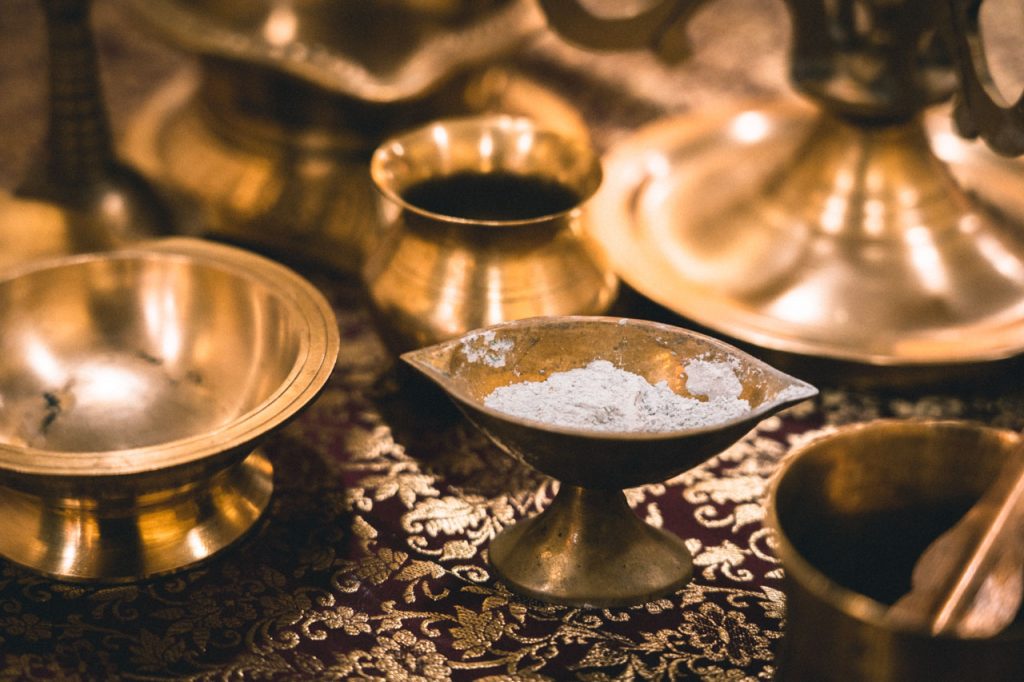
Many Hindus apply ash on their forehead after participating in pujas, whether at home or in temples. Devotees who want a sense of security may carry ash from an elaborate puja or a sacred place, like a holy temple in India, around in their wallet — or they may give it to people who need blessings. For example, if you visit someone sickly in the hospital, you can pray for them and give them the ash to protect them from further ill-health.
Most of the ash is prepared in India. It’s basically cow dung, burnt with herbs, wood, ghee, and honey. Cows are herbivores, so their dung is relatively clean. Anyway, since it’s all burnt, the bacteria are killed. It’s just ash.
The ash production is purely commercial. It is imported to Singapore by the metric tonne. You can buy a packet of it at Serangoon Road for about $3. Only during a puja is the ash sanctified.
What does the ash symbolise? Hindus cremate. So the ash signifies that our body is going to turn to ash. It is a constant reminder of the impermanence of life and thus the permanence of God.
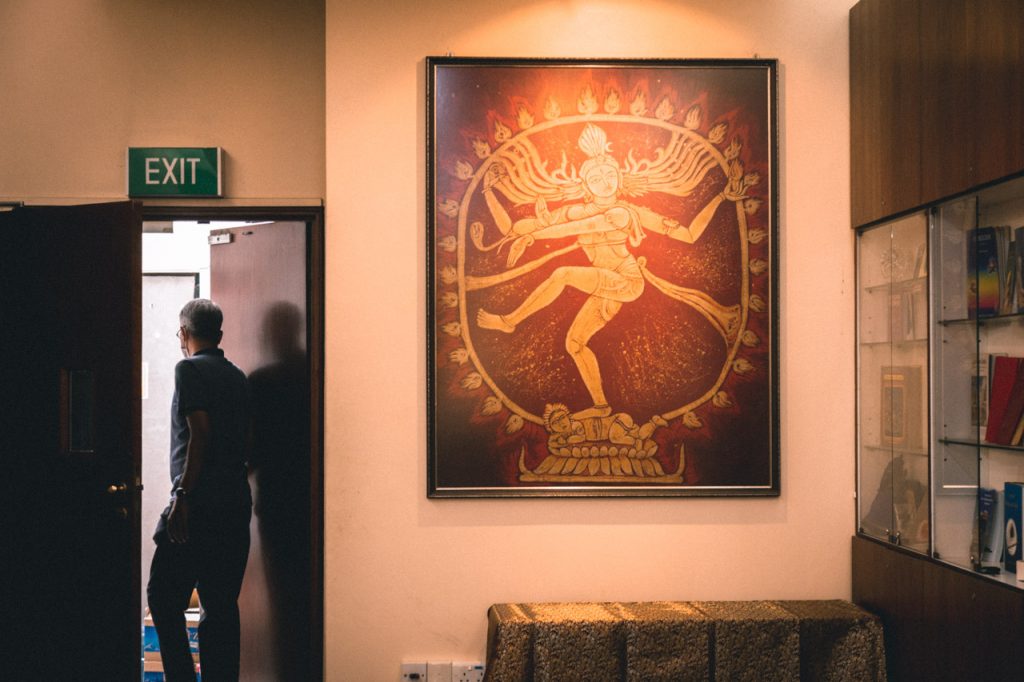
These are some religious items that Hindus carry with them. But in Hinduism, there’s no hard and fast rule about adorning yourself with religious items. It depends on your habits, lifestyle, and beliefs.
I don’t carry anything with me because I perform pujas regularly. However, I make my children wear amulets like the kaapu.
These items are helpful in offering protection, but at the end of the day, they cannot replace the pujas we perform, which are the means through which we connect with God.
Tell us what you thought of this story at community@ricemedia.co. And if you haven’t already, follow RICE on Instagram, Spotify, Facebook, and Telegram.

